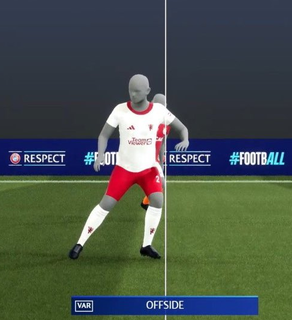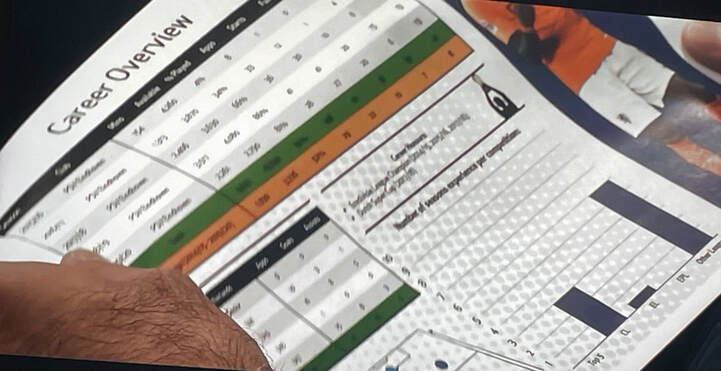In Law 11 of Association Football’s Laws of the Game the offside rule is delineated. Section11.1 (Offside Position) states:
A player is in an offside position if:
- any part of the head, body or feet is in the opponents’ half (excluding the halfway line) and
- any part of the head, body or feet is nearer to the opponents’ goal line than both the ball and the second-last opponent.
A player is not in an offside position if level with the:
- second-last opponent or
- last two opponents.
This formal rule has been altered many times over the years. Back in 1863, football had a similar offside rule to rugby. Players were deemed offside if they were ahead of the ball, with a goal kick the only exception.
In 1866, the rules that we are familiar with today appeared. The big difference being that a player was offside “unless there are at least three of his opponents between him and their own goal”. As time passed, this changed to two, and has remained at two since (the goalkeeper is often forgotten about today as they are almost always between the attacker and the goal).
As the years rolled by other changes were made to alter the rule, many of which were to encourage attacking play and goals.
By 1990 FIFA and others wished to make further changes. During the World Cup in Italy the International Football Association Board met at the Hilton Cavalieri Hotel in Rome on the 28th of June to discuss changes to equipment and the offside rule. The minutes of the meeting can be found here and include the signature of one J. S. Blatter.
A crucial rule change was proposed and accepted at the meeting. The change was subtle and added just two words. Law XI – Off-side – (2) changed from:
A player shall only be declared off-side and penalised for being in an off-side position, if, at the moment the ball touches, or is played by one of the team, he is, in the opinion of the referee (a) interfering with play or with an opponent, or (b) seeking to gain an advantage by being in that position.
to
A player shall only be declared off-side and penalised for being in an off-side position, if, at the moment the ball touches, or is played by one of the team, he is, in the opinion of the referee (a) seeking to interfere with play or with an opponent, or (b) seeking to gain an advantage by being in that position.
The change is so subtle it is hardly noticeable. It is the addition of the two words “seeking to” just after “(a)”. This change was crucial.
Just over two weeks earlier, the Republic of Ireland had debuted at the World Cup and played rivals England in Cagliari. The game ended 1-1 thanks to a Kevin Sheedy equaliser for the Republic of Ireland after 73 minutes. The goal is one of the most famous in Irish football history and one of the most important.
It should not have stood under the offside rules at the time. The late Alan McLoughlin – who himself would become a national hero in November 1993 with a goal of at least equal importance – was stood in an offside position. The picture below demonstrates just how far offside McLoughlin was.
From 1990 to the introduction of VAR in the late 2010s, players were deemed to be onside if they were “level” with the second-last defender. The interpretation of ‘level’ was subjective, but most officials judge this to be, anecdotally at least, if some part of the attacker was inline with the second-last defender.
In May 2005 in Zurich FIFA sought to clear this up by stating that a player is offside if “any part of his head, body or feet is nearer to his opponents’ goal line than both the ball and second last defender. The arms are not included”. Because the technology did not exist to examine in-game decisions, officials used their judgement to make these calls. They got many correct and some incorrect.
With the introduction of VAR and now automated offside, last night we got this graphic.

Is this gaining an advantage? A shoulder or ear millimetres ahead of the second-last defender more than 30 yards from goal. Not for me. But those making and implementing the rules seem to think so. As do many others.
When the technology is used like this, it reverses all the rule changes in the decades before that were implemented to increase the number of goals.
I wonder how many goals – many of the most famous of all time – would have been ruled out because of VAR? How many outcomes would be different? How many trophies won or lost?


 RSS Feed
RSS Feed